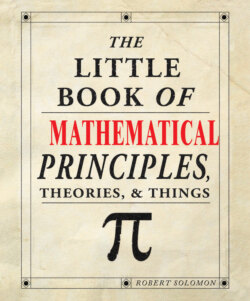Читать книгу The Little Book of Mathematical Principles, Theories & Things - Robert Solomon - Страница 17
6th century BC Greece Platonic Solids
ОглавлениеThere are precisely five Platonic solids.
_______________
For a regular or Platonic solid, all the faces are equal regular polygons.
A regular polygon, such as a square or an equilateral triangle, has equal angles and equal sides. The best-known Platonic solid is the cube, whose six faces are equal squares.
The proof that there are no more than five such solids appears as the very last proposition in Euclid’s Elements.
They are called Platonic solids from their appearance in Plato’s Timaeus (dated about 350 BC). This is an obscure and ambiguous book, however, with many possible interpretations. It contains what could be described as an atomic theory in which the four elements of matter – fire, air, water, and earth – consist of these solids. They look as follows:
| fire | tetrahedron |
| air | octahedron |
| water | icosahedron |
| earth | cube |
Fire, for example, consists of countless atoms, each of which is a tiny tetrahedron. The sharp points of this solid explain why fire is painful.
Earth (or solid matter in general) consists of atoms, each of which is a tiny cube. The fact that cubes can be densely stacked together explains why earth is heavy.
The dodecahedron represents star and planet matter, which was believed to be different from matter on the Earth.
The five solids were known before Plato. They are attributed to the Pythagoreans, who reportedly sacrificed one hundred oxen to celebrate the discovery of the dodecahedron.
See: The Pythagoreans, page 17; Regular Polygons, page 21; Euclid’s Elements, page 35.
Tetrahedron: four triangular faces.
Octahedron: eight triangular faces.
Cube: six square faces.
Dodecahedron: 12 pentagonal faces.
Icosahedron: 20 triangular faces.
